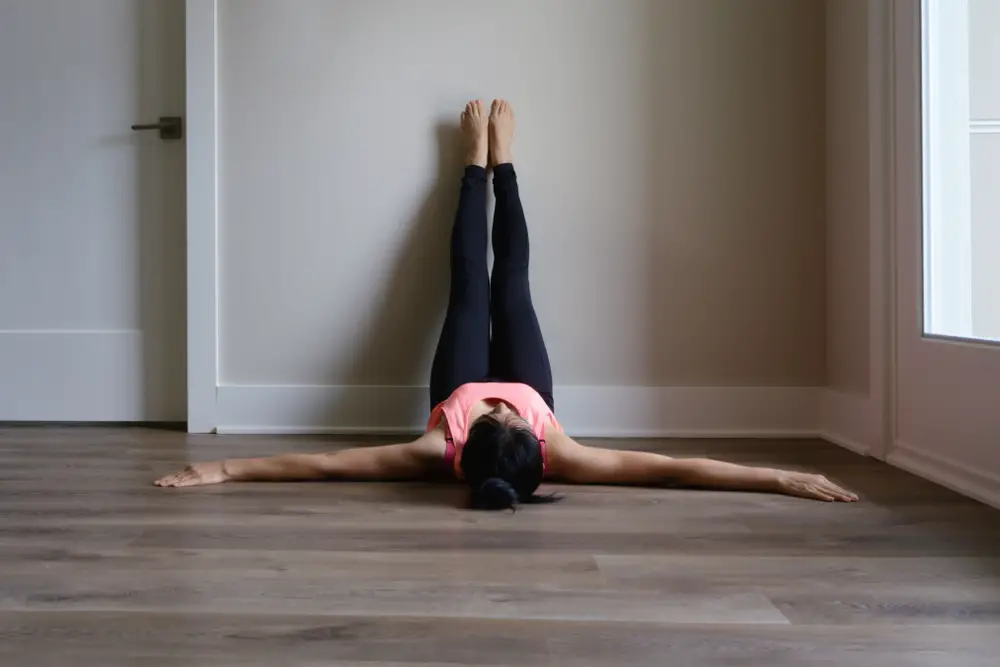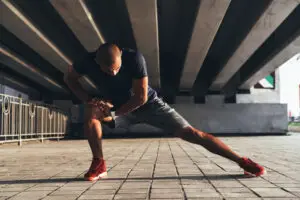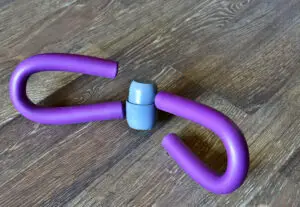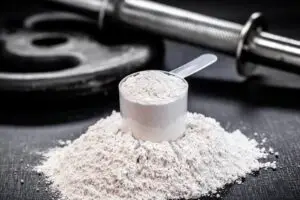Wall Pilates workouts have become increasingly popular for individuals looking to improve their fitness and flexibility. They provide a unique twist on traditional Pilates exercises, incorporating the use of a wall to enhance stability and support. These workouts can greatly benefit beginners, as the wall serves as a helpful tool in mastering the proper form and technique.
This type of workout focuses on core strength, balance, and muscle control, making it ideal for individuals at any fitness level. The exercises are low-impact, which reduces the risk of injury and makes them suitable for people of all ages. By utilising the wall as a prop, participants can engage their muscles more effectively, leading to improved functional movement and overall body awareness.
Throughout this article, a variety of beginner-friendly Wall Pilates exercises will be discussed, demonstrating how this innovative approach can help improve posture, flexibility, and body strength. Whether you’re new to Pilates or a seasoned practitioner, these wall-assisted workouts can provide a fresh challenge and lead to impressive results.
What is Pilates
Pilates is a form of exercise that focuses on the development of core strength, flexibility, and proper alignment of the body. Originating in the early 20th century, it was created by Joseph Pilates as a method to improve posture, muscle control and balance. Over the years, Pilates has gained popularity as a low-impact workout that helps individuals achieve overall fitness, mobility, and body awareness.
The main principle behind Pilates is the emphasis on the synergy between the mind, body, and breath. With a mind-body connection at its foundation, the practice encourages individuals to be fully aware of their movements and body positioning throughout each exercise. The focus on breath control allows practitioners to engage their core muscles effectively, leading to improved stability and posture.
The workouts in Pilates mainly target the core muscles, which include the abdominal, back, and pelvic muscles. These muscle groups are essential for providing support, strength, and balance to the body. Through regular practice, Pilates enthusiasts can expect to experience improved core strength, increased flexibility, better posture, and enhanced mobility.
Pilates exercises are designed to be adaptable and adjustable, making them suitable for various fitness levels and accommodating different practitioners’ needs. The low-impact nature of Pilates makes it an appealing option for those who are new to exercise or dealing with physical limitations. Additionally, it can serve as a complementary workout for athletes or fitness enthusiasts, filling any gaps in their current training regimen.
In summary, Pilates offers numerous health benefits by targeting core muscles and promoting body awareness, control, and stability. Suitable for individuals from various fitness backgrounds, this low-impact exercise system can improve strength, flexibility, and posture while fostering a strong mind-body connection.
Basics of Wall Pilates
Wall Pilates is a modification of traditional Pilates exercises, incorporating the support of a wall to enhance the effectiveness of the workout. This low-impact form of exercise focuses on developing muscular endurance, coordination, and balance, making it suitable for beginners to advanced practitioners.
To begin a Wall Pilates session, all you need is a mat and a sturdy wall as your prop. Some exercises might require additional props such as a Pilates ball or a resistance band, but these are optional, and the majority of the exercises can be performed using your body weight and the wall for support.
The effectiveness of Wall Pilates lies in the ability to challenge various muscle groups whilst maintaining proper postural alignment. By using the wall as a support and stabilisation aid, practitioners can focus on engaging their core, providing an additional challenge to traditional mat Pilates exercises.
There are various Wall Pilates exercises that can be performed to target different muscle groups. Here are a few examples:
- Standing Leg Raise: Stand facing the wall with both hands on the wall for support. Slowly raise one leg to the side, keeping the knee straight and toes pointed. Hold for a couple of seconds before lowering the leg back to the starting position. This exercise targets the hips, glutes, and outer thighs.
- Wall Push-ups: Stand at arm’s length from the wall and place your hands against it, slightly wider than shoulder-width apart. Slowly lower your chest towards the wall, keeping your body in a straight line. Push back to the starting position, engaging your chest and arm muscles.
- Wall Squats: Stand with your back against the wall and feet hip-width apart. Slide your back down the wall until your thighs are parallel to the floor. Hold the squat position for a few seconds before rising back up to the starting position. This exercise targets the quadriceps, glutes, and hamstrings.
When performing a Pilates wall workout, remember to pay attention to proper breathing techniques and maintain a neutral spine throughout the exercises. As your confidence and knowledge in Wall Pilates increase, you can explore more challenging exercises or incorporate additional props to further enhance your workout.
Understanding Core Muscles
Wall Pilates is a popular workout method that focuses on strengthening the core muscles, which are essential for maintaining balance, stability, and overall fitness. The core muscles consist of the abs, deep abdominal muscles, and back muscles. In a Wall Pilates workout, these muscles are targeted, helping to improve posture and reduce the risk of injury.
The deep abdominal muscles, also known as the transverse abdominis, play a vital role in supporting the spine and maintaining proper posture. These muscles are located beneath the more visible rectus abdominis, or “abs”, and work together with the back muscles to form a strong and stable core. Performing Wall Pilates exercises can help engage and strengthen these lower abdominal muscles.
Back muscles are another important component of the core, as they provide support to the spine and assist in everyday movements. Wall Pilates exercises specifically target the erector spinae muscles, which run along the length of your spine. By working on the back muscles, individuals can improve their posture, reduce back pain, and enhance their overall core strength.
Wall Pilates also incorporates a focus on the oblique muscles, which are situated on the sides of the abdomen. These muscles are essential for a variety of movements, such as twisting and bending, and contribute to overall core stability. Strengthening the oblique muscles can lead to better balance and increased confidence in daily activities.
In summary, incorporating Wall Pilates into your fitness routine can provide numerous benefits to your core muscles by targeting the abs, deep abdominal muscles, back muscles, and obliques. Engaging these muscles in your workout will help improve posture, stability, and overall fitness levels.
Key Wall Pilates Exercises
Wall Pilates is an effective way to improve flexibility, build strength, and enhance stability without needing specialised equipment. The wall provides gentle resistance for the exercises, making them ideal for beginners as well as those looking to strengthen their core and improve their overall fitness. The following are some key wall Pilates exercises you can easily practice at home.
Wall Leg Lifts: This exercise targets the lower body, specifically the glutes, hamstrings, and inner thighs. To perform wall leg lifts, stand with your right side close to the wall. Place your right forearm against the wall for support, and lift your left leg laterally to the side. Slowly lower the leg and repeat. Make sure to engage your core throughout the movement to maintain balance.
Wall Bridge: Wall bridges offer a safe and effective way to target the glutes and lower back while engaging the core. To begin, lie on your back with your feet flat on the ground and your knees bent, hip-width apart. Place your feet against the wall, and slowly lift your hips off the ground while pressing your feet into the wall. Lower your hips back to the ground and repeat this movement.
Wall Push-Up: Wall push-ups provide a beginner-friendly alternative to traditional push-ups. Stand facing the wall, with your hands placed shoulder-width apart on the wall. Keep your feet slightly apart and your body in a straight line. Bend your elbows and bring your chest towards the wall, then push back to the starting position. Focus on engaging the core and maintaining a straight alignment throughout the exercise.
Wall Squats: A wall squat is a variation of the traditional squat that focuses on leg strength, balance, and stability. Stand with your back against the wall and feet hip-width apart, positioned slightly in front of your hips. Slide down the wall until your knees are bent at a 90-degree angle, ensuring your knees do not extend past your toes. Press into the wall, and hold the squat position for a few seconds before returning to the starting position.
Incorporating these exercises into your at-home workout routine will help build strength and flexibility while providing the many benefits of Pilates. The wall acts as both support and resistance, making them ideal for a range of fitness levels and allowing practitioners to progress at their own pace.
The Role of Other Body Parts
In wall Pilates workouts, the engagement of various body parts plays a significant role in achieving a well-rounded and balanced fitness routine. Incorporating these body parts ensures that the practice targets multiple muscle groups, leading to a toned and sculpted physique.
The arms and shoulders work in tandem during many wall Pilates exercises, providing stability and control. These upper body muscles assist in maintaining proper posture and alignment, particularly when performing movements that require pushing or pulling against the wall. Strengthening the arms and shoulders is crucial to supporting the spine and executing exercises with precision.
The back and spine are central to Pilates practice, as they form the core of most movements. In wall Pilates, the back and spine undergo stretching and strengthening to promote better posture, flexibility, and mobility. Exercises that involve spinal articulation and extension, such as the wall roll down, encourage the vertebrae to move sequentially, enhancing spinal health.
Body weight plays an essential role in Pilates as it allows for natural resistance against movements, leveraging the power of gravity. This form of resistance strengthens the targeted muscles without relying on additional equipment. In wall Pilates, the body weight is used strategically in various positions to increase the intensity of the exercises.
The glutes and legs provide essential support and stability during numerous wall Pilates exercises. These lower body muscle groups are crucial for achieving challenging positions and maintaining proper alignment. With exercises ranging from leg lifts to plies, participants work on toning and strengthening these muscles for improved overall fitness and balance.
Another critical aspect to consider is the hips and lower back region. Wall Pilates places a strong emphasis on maintaining proper alignment and engaging the core to prevent unnecessary strain on these areas. Exercises such as hip openers and pelvic tilts alleviate tension and tightness in the hips and lower back, leading to increased mobility and a strong foundation for other movements.
In summary, wall Pilates workouts integrate essential body parts, such as the arms, back, spine, shoulders, body weight, glutes, legs, hips, and lower back, to deliver a comprehensive and effective fitness routine. These elements contribute to a stronger, more flexible, and toned physique, making wall Pilates a popular and robust workout option.
Wall Pilates for Beginners
Wall Pilates is an excellent choice for beginners as it provides a comfortable and supportive environment to learn the basics of Pilates. The wall acts as a stabilising tool, allowing individuals to develop their concentration and understanding of the Pilates principles, while reducing the risk of injury.
One of the simplest yet effective wall Pilates moves for beginners is the supported roll down. It helps improve spinal mobility and engages the core muscles. To perform this exercise:
- Stand with your back against a wall, feet hip-width apart and slightly away from the wall.
- Inhale, lengthening your spine and engaging your abdominal muscles.
- Exhale, tilting your chin towards your chest and slowly rolling your spine away from the wall, one vertebra at a time.
- Inhale at the bottom of your roll down, maintaining your core engagement.
- Exhale, slowly rolling back up to the starting position against the wall.
Repeating this exercise will help build concentration and control in your movement, while the wall ensures proper alignment. It is essential to maintain the correct form and focus on smooth, precise movements to maximise the benefits of Wall Pilates.
In conclusion, Wall Pilates is a fantastic option for beginners, providing a comfortable and supportive environment to learn and master Pilates fundamentals. With consistent practice and the right guidance, one can progress from simple to more advanced exercises, building strength, mobility, and control in their Pilates journey.
Benefits of Wall Pilates
Wall Pilates is a popular and effective workout that offers several benefits for overall health and fitness. Utilising the resistance of the wall and the body weight, this low-impact exercise helps activate and engage muscles while reducing the risk of injury. In this section, we will explore the various benefits of incorporating Wall Pilates into your fitness routine.
One of the main advantages of Wall Pilates is its ability to improve flexibility. Through a series of stretches and poses, participants can lengthen their muscles and improve their range of motion. This increased flexibility not only contributes to better posture and balance but also supports overall functional fitness.
Wall Pilates also aids in strengthening and toning the body, particularly the core muscles, back, and legs. The consistent engagement of these muscles in the various poses and movements leads to enhanced muscle definition and a more toned silhouette. Furthermore, the strengthening aspect of Wall Pilates provides increased stability and support to the spine, which helps alleviate back pain and discomfort.
Another significant benefit of Wall Pilates is its focus on balance and body awareness. The use of the wall as a support and guide encourages the development of proper form and alignment, which is essential for performing various exercises and movements with precision and control. This heightened body awareness also promotes mindful breathing and a smoother flow during workouts, leading to a more efficient and productive exercise session.
While not primarily targeted for weight loss, Wall Pilates can assist in shedding some extra pounds when incorporated into a regular fitness routine. As the workouts focus on strengthening and lengthening muscles, the increased muscle mass boosts metabolism, which in turn helps burn calories even at rest. Moreover, Wall Pilates poses, such as those that target the glutes, can contribute to a more toned and sculpted booty.
In summary, Wall Pilates offers a wide range of benefits, including improved flexibility, muscle toning, increased strength and stability, enhanced balance and body awareness, and weight management. This low-impact workout is suitable for individuals of all fitness levels and can be easily integrated into a well-rounded exercise regimen.
Wall Pilates and Injuries
Wall Pilates is a low-impact exercise regime designed to strengthen muscles, improve flexibility, and minimise the risk of injuries, particularly for seniors and individuals recovering from injuries. When performed correctly, Wall Pilates can help alleviate back pain and can be highly beneficial to the muscles supporting the spine, hips, and shoulders.
This exercise form requires controlled and slow movements that focus on the individual’s bodyweight and the wall’s resistance. Due to its gentle nature, Wall Pilates helps protect the joints and doesn’t place excessive stress on them. The low-impact nature of this workout makes it accessible for people with a limited range of motion, ensuring that they can still exercise safely and avoid further injuries.
By practising consistent Wall Pilates exercises, individuals can work on their overall balance and stability, reducing the risk of falls and accidents. Moreover, engaging in these exercises promotes the strengthening of core muscles, which are essential for supporting the spine and preventing back injuries.
Wall Pilates can also be beneficial for those who are recovering from an injury, as it can be adapted to each person’s specific needs and abilities. As the exercises are low-impact and gentle on the joints, it can be an ideal form of exercise during the recovery process. It helps regain strength, flexibility, and range of motion, allowing individuals to gradually return to their regular activity levels.
In conclusion, Wall Pilates serves as a safe and effective way to maintain fitness, alleviate pain, and prevent injuries while improving balance and stability. It caters to individuals with various abilities, making it an excellent exercise option for seniors and those recovering from injuries.
Advanced Wall Pilates Techniques
Wall Pilates workouts are an excellent way to challenge your body and add extra resistance to familiar Pilates exercises. This advanced routine focuses on stability, stretches, and deeper muscle connection while utilising the wall for support and added intensity.
Wall Sits are a foundational exercise in advanced wall Pilates workouts. To perform them, stand with your back against a wall and slide down into a squat position, with your thighs parallel to the floor. Hold this position for 30 seconds to one minute, engaging your core and glutes, as you maintain smooth and controlled breathing.
Another effective wall workout is the Wall-Assisted Bridge. Lie on your back, place your feet on the wall with your knees bent over your hips and your calves nearly parallel to the floor. Press through your heels to lift your hips towards the ceiling, engaging your glutes and hamstrings. Lower back to the starting position and repeat the exercise for 40 seconds or more, as you build strength.
Incorporating additional stretches into your advanced wall Pilates workout can significantly improve stability and muscle connection. For example, try the Leg Circles stretch, an exercise aimed at lengthening the hamstrings while challenging your core stability. Lie on your back near the wall with one leg extended upwards, resting on the wall. Circle the opposite leg around in a wide range of motion, ensuring to maintain core engagement and a neutral spine.
Lastly, the Wall Push-Up Plank offers an extra challenge to your stability and upper body strength. Stand facing the wall and extend your arms to place your hands on the wall slightly wider than shoulder-width apart. Keeping your elbows close to your body, lower your chest towards the wall as in a traditional push-up, while maintaining a strong plank position throughout the movement. Push back to the starting position and repeat for multiple repetitions to build upper body and core strength.
Implementing these advanced Wall Pilates techniques into your workout routine can enhance overall fitness by providing challenge, stability, and connection. The unique feature of utilising the wall adds extra resistance to the exercises, allowing individuals to push their limits and achieve greater strength and flexibility
Specific Wall Pilates Workouts
Wall Pilates provides an excellent opportunity to perform various exercises and improve overall fitness levels. By using the wall as support, individuals can perform numerous Pilates movements with improved form and stability. Below are a few wall Pilates workouts that specifically target different areas of the body.
Bridges: Start by lying down on the floor with your feet flat against the wall and your knees bent. Push your hips up towards the ceiling while engaging your core and glute muscles. Hold the position for a few seconds before gently lowering your hips back down to the floor. Repeat this exercise for several repetitions to effectively work on your glutes and lower back.
Squats: Begin by standing with your back against the wall and your feet shoulder-width apart. Slowly slide down the wall, bending your knees until your thighs are parallel to the floor. Make sure your knees are aligned with your toes and maintain a neutral spine throughout the movement. Hold this position for a few seconds before pushing yourself back up to the standing position. Wall squats are an excellent way to strengthen your legs and core muscles.
Wall Push-ups: These modified push-ups offer an effective upper body workout while reducing the strain on your wrists and shoulders. Stand facing the wall with your hands placed shoulder-width apart on the wall. Lower your chest towards the wall by bending your elbows, keeping your body in a straight line. Push away from the wall to return to the starting position.
Warm-up: Before starting any wall Pilates workout, it’s crucial to properly warm up your muscles to avoid injury. Spend several minutes performing gentle stretches, followed by dynamic movements like leg swings or shoulder rolls, to increase your heart rate and prepare your body.
Glute Bridges: Similar to regular bridges, glute bridges target the lower back and glutes. However, instead of placing your feet flat against the wall, position your heels on the wall with your toes pointing upwards. As you lift your hips, focus on squeezing your glutes for maximum engagement.
Lunges: For wall lunges, stand facing the wall with one foot placed firmly against the wall while extending the other leg behind you. Bend your front knee and lower your hips until your front thigh is parallel to the ground. Keep your back and core engaged as you perform the exercise. Repeat on both sides to strengthen your quadriceps and glutes.
Wall Lunge: This exercise is an excellent addition to any wall Pilates routine. Stand with your back to the wall and step one foot forward into a lunge position. Slide your back foot up the wall, keeping your heel off the ground. Lower your hips until your front thigh is parallel to the ground, while maintaining contact with the wall. Hold the position for a few seconds, then carefully release and switch legs.
By incorporating these exercises into a wall Pilates workout, you can effectively target different muscle groups and improve your overall strength and flexibility. Remember to always listen to your body and maintain proper form to maximise the benefits and minimise the risk of injury.
Popular Trends in Wall Pilates
Wall Pilates has recently gained significant attention due to its low-impact nature and effective workouts that only require a wall. A primary factor in this trend gaining traction is its growing popularity on TikTok, with many users posting videos that demonstrate various exercises suitable for different fitness levels.
Wall Pilates has become associated with the hashtag #FitTok, which encompasses various fitness activities and workouts shared on the platform. Numerous TikTok users have successfully incorporated Wall Pilates into their fitness routines, showcasing how simple and accessible it is for people to try these exercises at any time and place. The ease of incorporating a wall as exercise equipment allows users to conveniently improve their strength and flexibility without the need for expensive gym memberships or traditional Pilates equipment.
Another popular trend that complements Wall Pilates is weightlifting. In contrast to the gentle movements in Wall Pilates, weightlifting focuses on building muscle mass through more intense exercises. Although the two activities might appear distinctly different, they can be combined effectively to provide a well-rounded fitness routine.
Wall Pilates can help those who engage in weightlifting by improving their flexibility and mobility, providing a better foundation for lifting heavier weights and reducing the risk of injury.
In summary, Wall Pilates has become a popular trend in the fitness community, particularly on TikTok’s #FitTok. By incorporating these low-impact workouts alongside other activities like weightlifting, individuals can create a comprehensive fitness routine that caters to their unique goals.
Comparison with Similar Workouts
Wall Pilates, a low-impact workout focused on developing core strength and stability, has some similarities and differences with other popular workouts. Let us examine how it compares to yoga, weight training, alternative workouts, and cardio exercises.
Firstly, yoga and Wall Pilates share some common ground in terms of promoting flexibility, balance, and mind-body connection. Both workouts involve bodyweight exercises, requiring little to no equipment. However, the focus in yoga is more on holding postures and deep stretching, while Wall Pilates centres around controlled movements and core strength. Exercises in Wall Pilates make use of a wall as a form of resistance to enhance muscular engagement, which is unique compared to traditional yoga.
When comparing Wall Pilates to weight training, the primary difference lies in the equipment used and the type of muscular strength gained. Weight training utilises free weights, such as dumbbells and barbells, or resistance machines to build muscular strength and size.
In contrast, Wall Pilates relies on bodyweight movements and the wall as resistance to sculpt and tone muscles. As a result, the former is more suited for individuals aiming for significant muscle growth, while the latter is appropriate for those seeking improved muscle tone and strength without added bulk.
Alternative workouts, such as barre or TRX suspension training, can offer similar benefits to Wall Pilates, with a focus on low-impact exercises, increased core strength, and body sculpting. Like Wall Pilates, barre combines elements from ballet, Pilates, and yoga to create a full-body workout.
TRX suspension training, on the other hand, makes use of suspended straps to perform various bodyweight exercises. While these alternative workouts utilise distinctive tools or techniques, they all share the goal of improving muscle strength, flexibility, and posture through low-impact exercises.
Lastly, in comparison to cardio workouts, Wall Pilates is not intended to be an intense cardiovascular workout. Cardio exercises, such as running or cycling, aim to increase heart rate and improve overall cardiovascular fitness.
Wall Pilates, however, concentrates on slow, controlled movements and core engagement, providing more emphasis on muscular strength and stability rather than aerobic endurance. Participants seeking to improve their cardiovascular fitness may need to incorporate additional cardio exercises alongside Wall Pilates in their routine.
Conclusion
Wall Pilates workouts have gained popularity due to their ability to provide a full-body exercise whilst incorporating the benefits of resistance training. These workouts are low-impact, ideal for those looking to strengthen their muscles without straining joints or ligaments.
The wall Pilates workout for beginners is a 20-minute routine that cycles through six foundational movements, engaging the core and helping to build muscular endurance.
With the support of the wall, participants can focus on slow and controlled movements, thereby increasing “time under tension” during exercise. This approach is essential for improving muscular endurance and overall strength. Furthermore, the wall provides added resistance, enabling individuals to intensify their workouts without relying on additional weights.
Wall Pilates has been widely embraced by the fitness community, garnering attention on platforms such as TikTok. This trend signals the efficacy of the workouts and the potential for these exercises to be incorporated into a broader fitness routine.
In short, wall Pilates workouts offer a unique and effective approach to full-body conditioning, harnessing the stabilising power of the wall to engage muscles and promote overall strength and endurance. As with any new workout regimen, consult a physician or expert before beginning, to ensure it is appropriate for one’s specific health needs and limitations.

I’m Jennifer a beauty and wellness expert. I believe in promoting a sustainable and healthy lifestyle from within. Helping people feel good is my passion; whether it’s teaching yoga or offering skincare advice.







